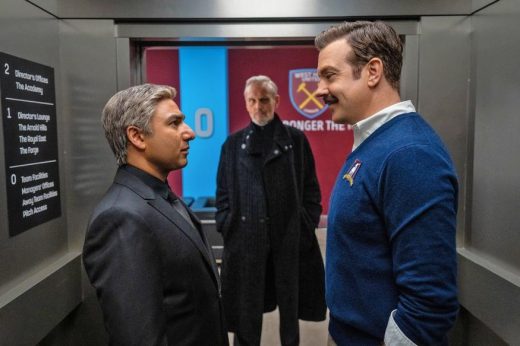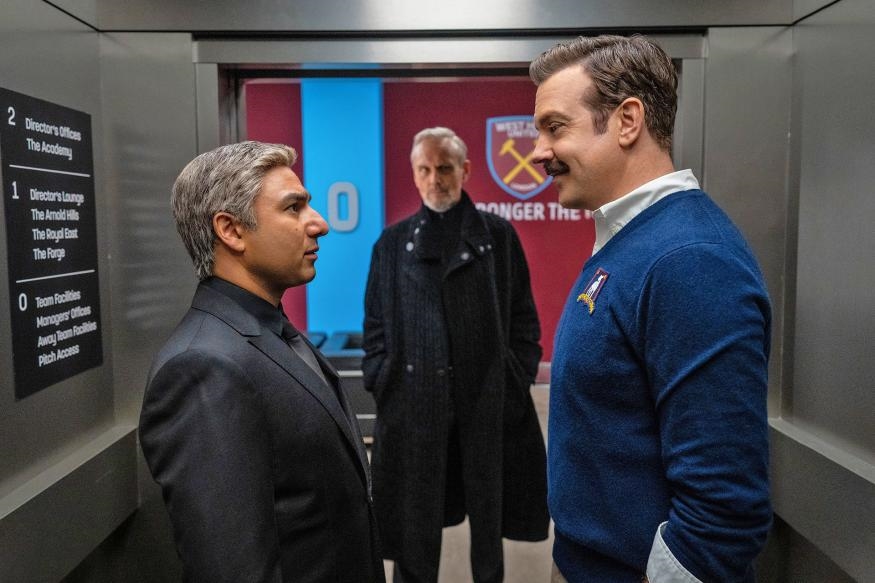Apple TV+ app is now available for DirecTV Stream box users
‘Ted Lasso’ returns with a stronger, more focused third season
I’ve always found the major criticism against Ted Lasso, that it’s too saccharine, to be quite unfair. This is a series in the Frank Capra mold, where the sunny skies and primary colors sweeten the bitter pills being handed out. For every scene of wish fulfillment designed to get you pumping the air, there are meditations on suicide, betrayal and emotional neglect. It’s also funny – enough that Emmy voters gave it Best Comedy two years in a row. Now the third and, far as we know, final season of the show will return to Apple TV on March 15th.
It picks up after the summer break, in the run-up to Richmond’s return season in the Premier League (EPL) after winning promotion by the skin of its teeth last time around. It’s been a long while since the second season aired, the longer gap attributed to behind the scenes issues. Jason Sudekis, who became co-showrunner this time around, reportedly ordered a ground-up rewrite after becoming dissatisfied with the original direction this season was taking. On the basis of the first four episodes, which Apple made available ahead of broadcast, our patience has been well-rewarded.
Such is the nature of Apple’s restrictive covenant on spoilers that I can’t talk about many specifics about the third season. The first episode is the weakest of the bunch, taking time to re-establish where everyone is after their summer break. (Are placeholder episodes necessary given the nature of streaming these days?) Keeley is finding the rigors of running her own business to be harder than expected, while Rebecca has taken Ted’s pledge of winning the league to heart. Ted, meanwhile, is feeling just as emotionally stunted as he has been previously, moreso after spending a summer with Henry, clearly having not dealt with Nate’s betrayal, or the contrived reasons behind it.
As part of Lasso’s evolution from a sitcom to a comedy drama, the runtimes of each episode are now firmly measured in hours, rather than half hours. The narrative has broadened out to cover the personal lives of many of the main footballers, as well as giving Keeley a whole new team to work with. We even get our first proper glimpse of Michelle and Henry back home in Kansas, not to mention the storylines featuring Sam and, of course, the dreaded Nate. That’s a lot for a show to handle, especially one that – similarly unfairly – was described as unfocused and messy in its second season. (Blame must go to Apple for that one, given its late-in-the-day request to add a further two episodes to the order.)
There are more threads in the storyline, but Ted Lasso has refocused its episodic structure around the Premier League season. And two parallel narratives come to the fore: Ted’s struggle to access his emotions in a healthy way, and the battle over Nate’s soul. Rupert, played with evil relish by Anthony Head, is the devil lurking on the wonder kid’s shoulder, dangling temptation before him at every turn. I probably can’t talk about [ACTOR] playing [CHARACTER], either, a condensed version of every mono-named prima-donna footballer that is often idolized and hated in equal measure.
I was interested to see how the show’s newfound embrace by the football establishment would alter its customary lack of grounding in reality. This season sees plenty of filming at some big name stadiums, even down to the retention of the sponsor walls for post-match interviews. But don’t go in expecting a new-found commitment to footballing verisimilitude, with the opposition teams all played by actors with little resemblance to their real-world counterparts. Just remember that this is still Ted’s world, we’re just lucky enough to spend a little time watching it.
(25)




